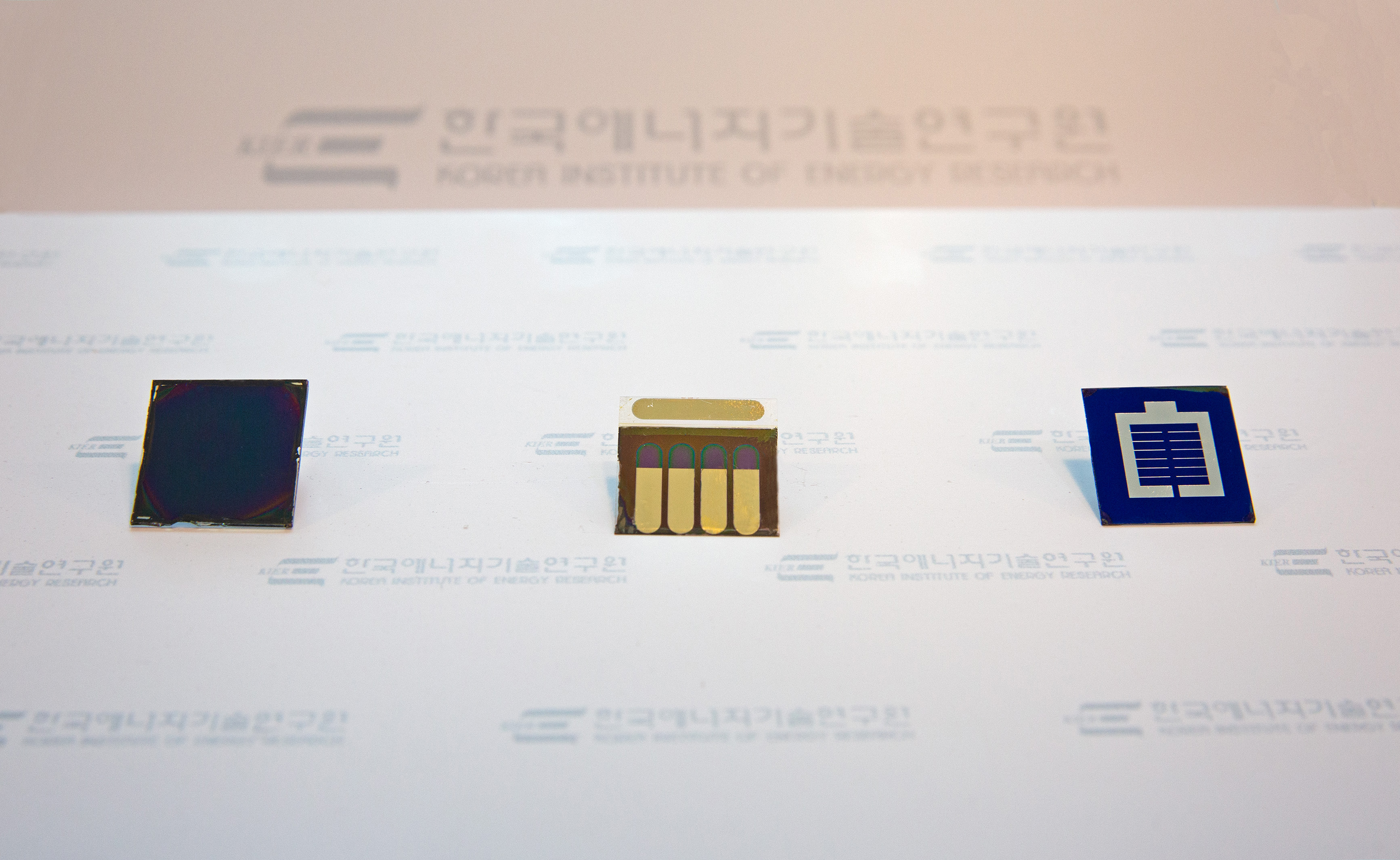The Photovoltaics Research Department of the Korea Institute of Energy Research (hereafter KIER), working with the KIER Energy AI and Computational Science Lab, has achieved advancements in the stability and efficiency of semi-transparent perovskite solar cells. These cells have potential use in building windows and tandem solar cells*. The semi-transparent solar cells achieved a record-breaking efficiency of 21.68%, making them the most efficient amongst the perovskite solar cells using transparent electrodes in the world. Additionally, they showed remarkable durability, with over 99% of their initial efficiency maintained after 240 hours of operation.
*Tandem solar cells: Solar cells that stack two solar cells with different energy absorption bands (bandgaps) vertically to increase light utilization. This technology can surpass the theoretical efficiency limits of conventional single-junction solar cells.
In order to reach carbon neutrality by 2050, the key lies in attaining ‘ultra-high efficiency’ and ‘diversifying the application areas’ of next-generation solar cell technology, overcoming constraints in installation spaces and national land area. This requires efficient and multi-functional technologies like tandem solar cells and solar cells for windows. Highly efficient and stable semi-transparent perovskite solar cells are required in both technologies.
For the fabrication of the semi-transparent perovskite solar cells, it is necessary to replace the metal electrodes of conventional opaque solar cells with transparent electrodes that allow light to pass through. During this process, high-energy particles are generated, leading to the degradation of the performance of the hole transport layer*. To prevent this, it is common to deposit a metal oxide layer that acts as a buffer between the hole transport layer and the transparent electrode layer. However, compared to opaque solar cells produced under the same conditions, the charge transporting properties and stability of the semi-transparent devices are reduced, and the exact causes and solutions have not been clarified.
*Hole transport layer: the layer in the perovskite solar cells that make it possible for photogenerated holes in the perovksite layer to transfer and transport to the external circuit while blocking transfer of photogenerated electrons.
The researchers utilized electro-optical analysis and atomic-level computational science to identify the causes of the reduced charge transporting properties and stability that occur during the fabrication of semi-transparent perovskite solar cells. Through this, they discovered that lithium ions (Li), added to increase the electrical conductivity of the hole transport layer, diffuse into the metal oxide layer that serves as a buffer, ultimately changing the electronic structure of metal oxide buffer layer into that degrades its characteristics.
Furthermore, beyond identifying the cause, the researchers solved the problem by optimizing the oxidation time of the hole transport layer. They found that converting lithium ions into stable lithium oxide (LixOy) through optimized oxidation mitigates the diffusion of lithium ions, thereby enhancing the stability of the device. This discovery reveals that lithium oxide, previously considered a simple reaction byproduct, can play a crucial role in improving efficiency and stability.
The developed process resulted in semi-transparent perovskite solar cells with an impressive 21.68% efficiency, the highest among all transparent electrode perovskite solar cells. In addition, this research demonstrated an impressive retention of over 99% of its initial efficiency for 400 hours in dark storage and for more than 240 hours in continuously illuminating operational conditions, showcasing its outstanding efficiency and stability.
The research team went further and applied the developed solar cells as the top cell of tandem solar cells, creating the country’s first bifacial tandem solar cells that utilize light reflected from the rear as well as that incident from the front surface. In collaboration with Jusung Engineering Co., Ltd. and the German Jülich Research Center, the bifacial tandem solar cells achieved high bifacial equivalent efficiencies of 31.5% for four-terminal and 26.4% for two-terminal configurations* under conditions where the reflected light from the rear was 20% of standard sunlight.
*Rear reflection refers to the factor indicating the amount of light entering the rear of a bifacial solar cell. A rear reflection of 20% means that the amount of light incident from the rear is 20% (0.2 Sun) of the standard light intensity of 1 Sun incident from the front.
*Four-terminal/two-terminal: Terms related to the structure of tandem solar cells. A two-terminal configuration is where the top and bottom cells are integrated into a single unit, with two terminals exposed externally. A four-terminal configuration is where the top and bottom cells operate independently, with a total of four terminals exposed externally.
*Bifacial equivalent efficiency is an indicator of the performance of bifacial solar cells, represented by the sum of the front/rear efficiency or output. Currently, the world’s highest Bifacial equivalent efficiency for bifacial perovksite/Si solar cells under the same rear reflection conditions (20%) is 30% for four-terminal configurations and 27% for two-terminal configurations.
Dr. Ahn SeJin of the Photovoltaics Research Department, the leader of the research, stated, “This study represents a significant advance in the field by examining the degradation process occurring at the interface of organic compound and metal oxide buffer layer which is unique to semi-transparent perovskite solar cells,” and added, “Our solution is readily implementable, demonstrating great potential for the future use of the technologies we have developed.”
The findings of this study were featured on the Outside Front Cover of the esteemed journal ‘Advanced Energy Materials’ (with a notable impact factor of 27.8) and were made possible by research funding from the KIER.
